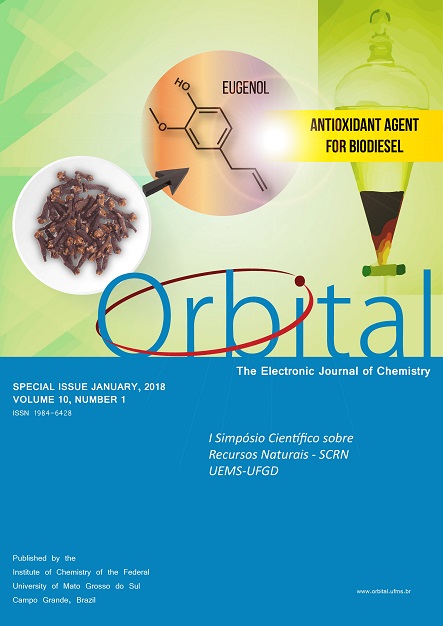Monitoring the Transesterification Reaction of Vegetable Oil to Biodiesel by Fluorescence Spectroscopy with UV Excitation: Correlation with Viscosity
- biodiesel,
- fluorescence spectroscopy,
- transesterification reaction,
- viscosity
Copyright (c) 2018 Orbital: The Electronic Journal of Chemistry

This work is licensed under a Creative Commons Attribution-NonCommercial-NoDerivatives 4.0 International License.
Abstract
The transesterification reaction is the most widely used process for biodiesel production. Monitoring it in real time enables optimization of the operational parameters, hence providing better yields and lowering the costs of biodiesel production. Techniques that have been used for this purpose include chromatography and spectroscopic methodologies. In this work, transesterification reactions were monitored on line, in situ, by fluorescence spectroscopy with ultraviolet excitation at ~360 nm. The temporal behavior of the fluorescence intensity was similar to that of the viscosity of the oil/alcohol/catalyst solution, as reported in the literature. The results indicated that UV-Vis fluorescence spectroscopy could be used on-line, in situ, for the efficient monitoring of biodiesel production, providing a valuable indication of the degree of success of the transesterification reaction.

